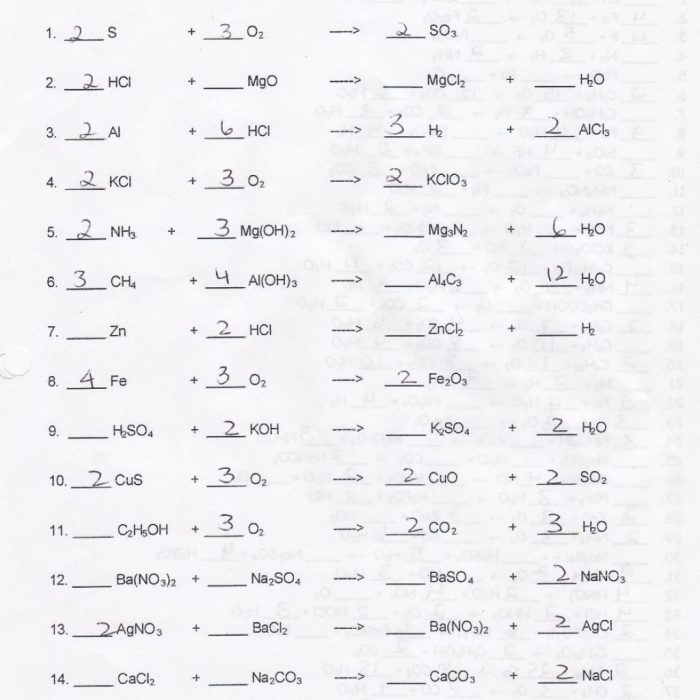Welcome to our in-depth guide on balancing equations practice 2 worksheet answers. This comprehensive resource provides a thorough overview of the concepts, techniques, and applications of balancing chemical equations. Whether you’re a student seeking mastery or an educator looking for effective teaching materials, this guide will empower you with the knowledge and tools to excel in this fundamental aspect of chemistry.
Our worksheet covers a wide range of topics, including the types of balancing equations, step-by-step methods, common errors, and real-world applications. With detailed explanations, practice problems, and expert troubleshooting tips, we aim to make the process of balancing equations not only manageable but also enjoyable.
Balancing Equations Practice 2 Worksheet: Balancing Equations Practice 2 Worksheet Answers

This worksheet provides practice for balancing chemical equations, an essential skill in chemistry. It is designed for students with a basic understanding of chemical equations and balancing techniques.
The worksheet covers various types of balancing equations and provides step-by-step guidance for completing them. It also includes common errors and troubleshooting tips to help students overcome challenges.
Worksheet Structure and s
The worksheet consists of:
- A brief introduction to balancing equations
- A list of different types of balancing equations
- A step-by-step balancing method
- Common errors and troubleshooting tips
- Practice problems with detailed solutions
Types of Balancing Equations
There are several different types of balancing equations, each with its own unique set of rules.
- Simple balancing equationsinvolve only a few reactants and products, and can be balanced using simple algebraic methods.
- Redox reactionsinvolve the transfer of electrons between reactants, and require a more complex balancing method.
- Gas-phase reactionsinvolve gases as reactants or products, and require the use of partial pressure to balance the equation.
Step-by-Step Balancing Method, Balancing equations practice 2 worksheet answers
The following table Artikels a step-by-step method for balancing equations:
| Step | Description |
|---|---|
| 1 | Identify the unbalanced equation. |
| 2 | Count the number of atoms of each element on both sides of the equation. |
| 3 | Adjust the coefficients in front of each reactant and product to make the number of atoms of each element equal on both sides. |
| 4 | Check to make sure that the charges on both sides of the equation are also equal. |
Common Errors and Troubleshooting
Common errors when balancing equations include:
- Changing the subscripts of the reactants or products.
- Not balancing the charges on both sides of the equation.
- Using incorrect coefficients.
Troubleshooting tips include:
- Check to make sure that the number of atoms of each element is the same on both sides of the equation.
- Make sure that the charges on both sides of the equation are also equal.
- Use small coefficients to avoid large numbers.
Essential FAQs
What is the purpose of balancing equations?
Balancing equations ensures that the number of atoms of each element is the same on both sides of the equation, adhering to the law of conservation of mass.
What are the different types of balancing equations?
There are two main types: redox reactions, which involve electron transfer, and non-redox reactions, which do not.
What are some common errors when balancing equations?
Common errors include changing the subscripts of reactants and products, adding or removing atoms, and not accounting for all atoms in the equation.